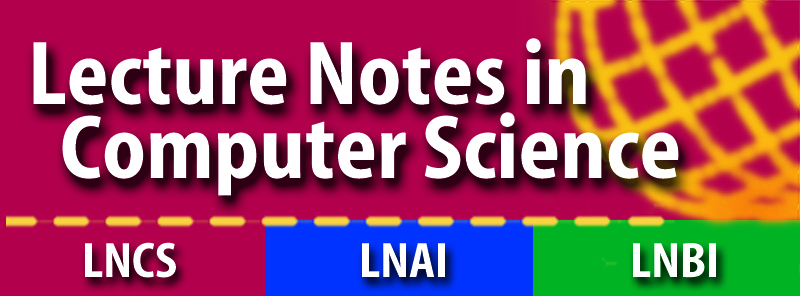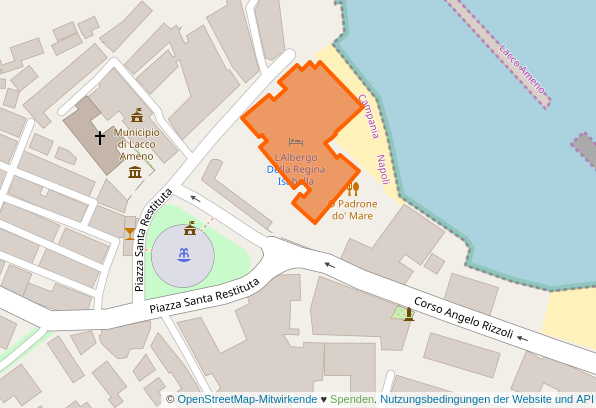Updates on the Workshop
Communication of Schedule and Plan Changes
To ensure scientific exchange and progress in these challenging times, we use our experience as the national distance university of Germany to host the workshop on June 9 as a virtual workshop. Since there are already many submissions and more announced to be provided within the following days, we extend the virtual workshop to a full-day format. Furthermore we divide our activities into two parts: Our virtual workshop on June 9 (part 1) as well as the workshop at AVI in Italy (part 2). Every participant of our virtual workshop is allowed to participate in person in part 2 - yet participation is not mandatory and serves to deepen scientific exchange and discuss the by-then results of the research road map.
For late submissions to our virtual workshop, we introduce a late submission deadline with April 30, 2020 (notification to authors on May 11, 2020). The deadlines and milestones for already submitted contributions remain unchanged (notification to authors on April 13, 2020).
We are happy to announce that we have been officially accepted by Springer: Our post-proceeding of the virtual workshop will be published in Lecture Notes in Computer Science (LNCS) in AVI-BDA series as AVI-BDA 2020. More detailed information such as required forms and templates will be provided to authors of accepted submissions with “notification to authors” milestone.
Summary
Part 1: Virtual Full-Day AVI Workshop on June 9
- Workshop Date: June 9, 2020
- Workshop Location: Virtual Workshop (more details will follow in the weeks before the workshop)
- Workshop Duration: Full Day
- Late Submission Deadline: April 30, 2020
- Main Scope: Definition of the research road map
- Registration Fees: No fees for the virtual workshop (participation in part 2 is recommended yet not mandatory, see fees for part 2 below)
- Workshop Post-Proceedings: Published via LNCS at Springer (AVI-BDA 2020)
- Workshop Date: September 28 – October 2, 2020 (specific day in clarification)
- Workshop Location: Ischia Island, Naples, Italy
- Workshop Duration: Half Day
- Main Scope: Exchange of results within the defined research roadmap (in person)
- Registration Fees: Registration at AVI conference is mandatory, AVI half-day workshop fees apply (to be announced by the conference)
Summary
Big Data and Artificial Intelligence (AI) mutually support each other: AI-powered algorithms empower data scientists to analyze Big Data and thereby exploit its full potential whereas Big Data enables Machine Learning (ML) specialists to comfortably design, validate and deploy AI models. This workshop's objective is to examine the importance and necessity of a third, a more straightforward relationship of Big Data and AI: AI supporting all user stereotypes and organizations involved in Big Data Analysis on their exploration journey from raw input data to insight and effectuation as modeled in Bornschlegl's IVIS4BigData. Although there exist valid challenges (e.g. shortage of highly skilled Big Data Analysis experts, lack of individualization and context-awareness in Advanced Visual User Interfaces, few automated Big Data Analysis workflows), only little research is conducted focusing on this third relationship. This proposal targets to change that. In this way, the overall scope and goal of the workshop is to bring together researchers active in these areas to achieve a road map, which can support the acceleration in research activities by means of transforming, enriching, and deploying AI models and algorithms as well as intelligent advanced visual user interfaces supporting creation, configuration, management and usage of distributed Big Data Analysis.
The workshop will take place on June 9, 2020 @ AVI 2020 [June 8-12, 2020 ]

Background
Scope of the half-day workshop at AVI2020 on Ischia Island (Naples)
Artificial Intelligence (AI) is a trending topic in various application domains. Popular application areas reach from health care [1][2], trading [3], driverless cars, humanoid robots [2] to people's everyday life where shopping websites recommend products, video streaming providers such as Netflix suitably recommend films and social media platforms individually decide upon content relevancy for each user [3]. Although AI is a trending topic, it is a topic that has fascinated humans since ancient times [2]. Examples are the Greek Mythology where statues were brought to life or Marry Shelly's Dr. Victor Frankenstein, a man-made creature that acquires human behavior [2]. The modern computer-based AI are closely linked to the 1950s and Alan Turing's question regarding thinking capabilities of machines [4]. Important milestones were the introduction of Artifical Neural Networks by Bernard Widrow in the 1950s [5] and the success of both, IBM's Deep Blue chess AI [2] as well as Alphabet's AlphaGo Zero AI for the asian game of Go [4] defeating the at the time world champions for the respective game. The latter AI learned its skills in a self-contained manner by playing against itself with neither human instructions nor historical data [4]. AI and AI-relevant terminology is standardized in ISO/IEC JTC 1/SC 42 standard [6] which declares AI to be a form of intelligence displayed by machines other than natural intelligence which is displayed by humans and animals [6]
The term and application area of Big Data is closely connected to AI [6] since big data provides AI with the possibility of deriving, validating, applying and enhancing statistical models through computation of huge amounts of data, whereas AI and its statistical approach of Machine Learning (ML) provides algorithms to exploit to exploit Big Data and its potential. A definition for big data is provided by Doug Laney [7] who describes data to be big data once the three v's volume (big amount of data), velocity (high frequent data inflow) and variety (ambiguous data manifestations regarding e.g. data format, data structure or data semantics) [8] are met. Although AI models and algorithms support the analysis of big data, human interaction and perception by different user stereotypes (from domain experts such as data engineers to management-level end user stereotypes) are the pivotal elements for exploiting big data [7]. Starting with an AVI Road Mapping Workshop in 2016, Bornschlegl et al. introduced in [9] a theoretical reference model called Information Visualization for Big Data (IVIS4BigData) that close[s] the gap in research with regard to Information Visualization challenges of Big Data analysis as well as context awareness [7]. IVIS4BigData covers the whole lifecycle of Big Data analysis from Raw Data Source into Views that enable the different user stereotypes participating in the process to gain Insight [9]. Furthermore, the reference model considers the for this purpose necessary advanced visual user interfaces as well as the underlying data storage, computation and service infrastructure to be decisive [9]. This workshop aims to carry on the comprehensive research and results of IVIS4BigData since 2016.
The utilization of AI for performing data transformation (analysis) in big data is well-established and a fundamental element of the IVIS4BigData reference model [7]. Nevertheless, further applications beyond analysis are rarely discussed in scientific publications although existing problems and challenges emphasize to do so: Although multiple user stereotypes with different technical backgrounds and skills participate in and benefit from the process of Big Data analysis, the valuable input of the Data Scientist user stereotype is still indispensable with today's analysis system implementations. As this user stereotype is still a relatively new profession and in comparison to the job market's demand very rare, especially small research facilities and Small and Medium-sized Enterprises (SMEs) will be confronted with recruitment challenges [7]. Since Big Data analysis involves multiple user stereotypes with different technical backgrounds and skills, advanced visual user interfaces for big data analysis are required to distinct between their different skill level. This raises a challenge for more individualization of the user interfaces' capabilities. Especially since comprehension and perception of different users varies drastically: Although a user interface might theoretically empower all users to perform a necessary interaction, there exists a subset of users that do not identify the right interface to do so. In addition, the variable nature of big data (variety of data manifestations with a high velocity regarding data inflow [10]) urges that there exists the further user interface challenge: a user interface that is perfectly designed for a certain task and a certain user competence profile doesn't suit the exact same user for the same task when the underlying artifact (the data) altered. Even if storage and computing resources' prices decline, the rising amounts of data [7] research institutions as well as private companies are confronted with, generate significant costs and raise a monetary challenge. The application of AI to solve or mitigate these problems raises further challenges regarding the comprehension of AI's reasoning and decision making for human users (lack of explainability and transparency cause difficulties regarding human-comprehensibility, debugging, fairness and accountability [4]). In addition, dynamic and evolving AI models cause user irritation due to altering system behavior (lack of reproducability and reliability. More AI application domains and growing AI-awareness of society raise further challenges regarding regulatory and legal requirements that need to be taken into account for designing AI based systems. This proposal will address these issues with a special focus on supporting intelligent advanced visual user interfaces for Big Data Analysis.
The purpose of this research road-mapping workshop is threefold: Firstly, we aim to consolidate information, technical details, and research directions from the diverse range of academic and industrial R&D projects currently available. Secondly, based on visions of future infrastructures, identify gaps in the current state of the art and thirdly, to identify new areas of research which require funding and support along with new areas for collaboration outside.
- The aim of this workshop is to bring together researchers active in these areas to produce a research road map for AI supporting Advanced Visual Big Data Analysis with a special focus on intelligent advanced visual interfaces that addresses needs not otherwise well met. This road map will identify current research and development and will identify potential gaps in knowledge and execution.
- We articulate a clear research, education and training agenda that tracks and builds upon existing and emerging technologies and that respond to future visions of AI and Advanced Visual Interface infrastructures supporting Advanced Visual Big Data Analysis. The process will develop a baseline by drawing upon all of our previous workshops and other activities within our recent research projects and will produce a research, technology and development road map. During the workshop we will map out future visions and complete a gap analysis. By treating this over the course of the day we can feedback to refine the baseline (to be captured into a workshop report and corresponding publications) and real research, technology and development gaps, which should be detailed in the road map. For this workshop we are adopting idealization, knowledge capture and road mapping approaches and activities developed during the H2020 projects EDISON, SENSECARE and METAPLAT.
- In this way, the overall scope and goal of the workshop is to achieve a road map, which can support the acceleration in research, education and training activities by means of transforming, enriching, and deploying AI models and algorithms as well as intelligent advanced visual user interfaces supporting creation, configuration, management and usage of distributed Big Data Analysis. Thereby, the research, education and training road map will pave the way towards establishing of an infrastructure for an AI-enabled visual user interface tool suite supporting Big Data Analysis and corresponding research activities sharing distributed research resources (i.e., data, tools, and services) by adopting common existing open standards for ML techniques, access, analysis and visualization, realizing a ubiquitous collaborative workspace for researchers which is able to facilitate the research process and its Big Data Analysis applications.
Researchers are welcome that work on different scopes of these problem spaces.
Topics of Interest
Key issues in this workshop will focus on (but are not limited to):
Artificial Intelligence supporting Big Data Collection, Management and Curation
Artificial Intelligence supporting supporting Big Data Analytics
Artificial Intelligence supporting Big Data Interaction and Perception
Artificial Intelligence supporting Big Data Insight and Effectuation
Artificial Intelligence supporting Configuration and Management of Big Data Storage and Compute Infrastructures, Services, and Tools
Artificial Intelligence supporting Advanced Visual User Interfaces and User Interaction in Big Data Applications
Artificial Intelligence supporting User Empowerment and Meta Design in Big Data Applications
Artificial Intelligence supporting Prediction and Automation of Big Data Analysis Workflows
Objectives
The main objective of this workshop is to bring together researchers and practitioners who are able to contribute to and aid in the development of a research road map. This road map can be used to inform, influence and disseminate ideas to founders, the wider research community, and the general public. Based on submitted position papers and existing research it will describe the current baseline of Infrastructures for Artificial Intelligence supporting Advanced Visual Big Data Analysis and what research gaps need to be filled to allow us to achieve our research and developments ambitions. Achievement of the goal of the workshop is supported by the presentation and discussion of research aiming at delivering Artificial Intelligence application scenarios, e.g. through intelligent Advanced Visual User Interfaces, supporting researchers and organizations in applying and maintaining distributed (spatially, physically, as well as potentially cross-domain) research resources for Big Data Analysis. These application scenarios serve to derive a reference model that utilizes open standards and that can be materialized through an open architecture and components derived from state-of-the-art research results and being able to deal with Big Data resources and services at scale. The workshop will aim at delivering road map covering a comprehensive set of standards-based services, visual user interfaces, and tools that support the complete life cycle of Big Data Analysis in a domain agnostic fashion.
Submission
Paper Submission
We invite contributions from researchers and practitioners working in the area of Big Data Visualization. Interested attendees should submit a short position paper (about 2500 words, Abstract 150 words) structured into sections that will be made available upon acceptance. Based on the review of the position papers about 6 to 10 participants will be invited to attend the workshop.
Online submission is required via EasyChair or via e-mail to thoralf.reis[at]fernuni-hagen.de. All submission must be formatted according to Springer's LNCS proceedings format (Templates: LaTeX, Word). Papers should be submitted in PDF format.
Please note that workshop attendants will be able to register either for the workshop day only or for the full event (workshop + conference). At least one author of an accepted workshop paper must register for the workshop at AVI 2020 conference.
Publications
Workshop papers will be published in a revised form as a post-proceeding within the Springer Lecture Notes in Computer Science [LNCS] Series [www.springer.com/lncs]). Authors should consult Springer’s authors’ guidelines and use their proceedings templates, either for LaTeX or for Word, for the preparation of their papers. Springer encourages authors to include their ORCIDs in their papers. In addition, the corresponding author of each paper, acting on behalf of all of the authors of that paper, must complete and sign a Consent-to-Publish form. The corresponding author signing the copyright form should match the corresponding author marked on the paper. Once the files have been sent to Springer, changes relating to the authorship of the papers cannot be made.

The initial main outcome will be a common research agenda, which will be a good starting point for possible proposals of joint research activities. Another initial outcome could be an article in an international journal describing the common research road map.
Dates
- Submission Deadline: March 23
- Notification to Authors: April 13
- Registration Deadline: April 20
- Paper Camera ready due: April 27
- [Update] Submission Deadline: April 30
- Workshop: June 9
Program
Timetable

Commitee
Organization Commitee

Thoralf Reis
University of Hagen, Germany, thoralf.reis[at]fernuni-hagen.de
Thoralf Reis is a PhD candidate as a part-time student at the University of Hagen, the same university he graduated from with a Master Thesis in the IVIS4BigData research field. Thoralf Reis has several years of experience in the automotive industry: Since 2011, he works in different roles with the R&D department of a German automotive OEM. His positions focused on a technical level on simulation, Machine Learning, connected car and services and computer vision. His most-recent position enables him to apply those technical backgrounds within automotive project management.

Dr.-Ing. Marco X. Bornschlegl
University of Hagen, Germany, marco-xaver.bornschlegl[at]fernuni-hagen.de
Marco Xaver Bornschlegl has several years’ experience in different IT management positions and in various national and international IT infrastructure projects within large international constructing, engineering, and services groups. Since 2016, he is CISO and leads the business unit IT-Services as an authorized representative with general power of attorney of STRABAG BRVZ GmbH & Co. KG, an internal service provider of STRABAG SE. In this context, he is responsible for the worldwide IT infrastructure within the STRABAG Group including data center operation, hosting and cloud services, network services, connectivity services, client services, and security topics. Moreover, he is a habilitation candidate at the University of Hagen.

Prof. Dr.-Ing. Matthias L. Hemmje
University of Hagen, Germany, matthias.hemmje[at]fernuni-hagen.de
Matthias Hemmje is full professor at the FernUniversität in Hagen, one of the leading distance universities in Germany. He is involved in research on Virtual Information and Knowledge Environments with special focus on distributed collaborative Digital Libraries, Multimedia Archives, Information Retrieval, Filtering, Linking, Enrichment, Personalization, and Information Visualization.
Program Committee
Thoralf Reis, University of Hagen
Marco X. Bornschlegl, University of Hagen
Matthias L. Hemmje, University of Hagen
Felix C. Engel, University of Hagen
Anna Esposito, University of Campania Luigi Vanvitelli
Andrea Molinari, Universita Di Trentino
Massimo Mecella, Sapienza Universita Di Roma
Tiziana Catarci, Sapienza Universita Di Roma
María Inés Torres, University of the Basque Country
Haiying Wang, Ulster University
Abbas Cheddad, Blekinge Institute of Technology
Haithem Afli, Cork Institute of Technology
Paolo Buono, University di Bari
Huiru Zheng, Ulster University
Venue
AVI 2020 will take place on the island Ischia, the largest island in the Gulf of Naples, easily connected to the city of Naples.

The workshop will take place at the Regina Isabella Hotel, 1 Piazza Santa Restituta, 80076 Lacco Ameno - Ischia (Na), Italy.

References
- [1] M. Healy, “A Machine Learning Emotion Detection Platform to,” pp. 2694–2700, 2018.
- [2] R. Bond, F. Engel, M. Fuchs, M. Hemmje, P. M. Kevitt, M. McTear, M. Mulvenna, P. Walsh, and H. J. Zheng, “Digital empathy secures Frankenstein’s monster,” CEUR Workshop Proceedings, vol. 2348, pp. 335–349, 2019.
- [3] P. Roehrig, F. Malcolm, and B. Pring, What To Do When Machines Do Everything: How to Get Ahead in a World of AI, Algorithms, Bots, and Big Data. John Wiley & Sons, 2017, 2017.
- [4] OECD, Artificial Intelligence in Society, 2019.
- [5] Y. Wang, “On Abstract Intelligence: Toward a Unifying Theory of Natural, Artificial, Machinable, and Computational Intelligence,” Inter- national Journal of Software Science and Computational Intelligence, vol. 1, no. 1, pp. 1–17, 2009.
- [6] “ISO/IEC JTC 1/SC 42 Artificial Intelligence,” 2018. [Online]. Available: https://isotc.iso.org/livelink/livelink/open/jtc1sc42
- [7] M. X. Bornschlegl, “Fakultät für Mathematik und Informatik Advanced Visual Interfaces Supporting Distributed Cloud-Based Big Data Analy- sis,” DIssertation, University of Hagen, 2019.
- [8] D. Laney, “3D Data Management: Controlling Data Volume, Velocity, and Variety,” META Group, Tech. Rep., 2001.
- [9] M. X. Bornschlegl, K. Berwind, M. Kaufmann, F. C. Engel, P. Walsh, M. L. Hemmje, and R. Riestra, “IVIS4BigData: A reference model for advanced visual interfaces supporting big data analysis in virtual research environments,” Lecture Notes in Computer Science (including subseries Lecture Notes in Artificial Intelligence and Lecture Notes in Bioinformatics), vol. 10084 LNCS, pp. 1–18, 2016.
- [10] J. S. Ward and A. Barker, “Undefined by data: A survey of big data definitions,” vol. abs/1309.5821, 2013. [Online]. Available: http://arxiv.org/abs/1309.5821